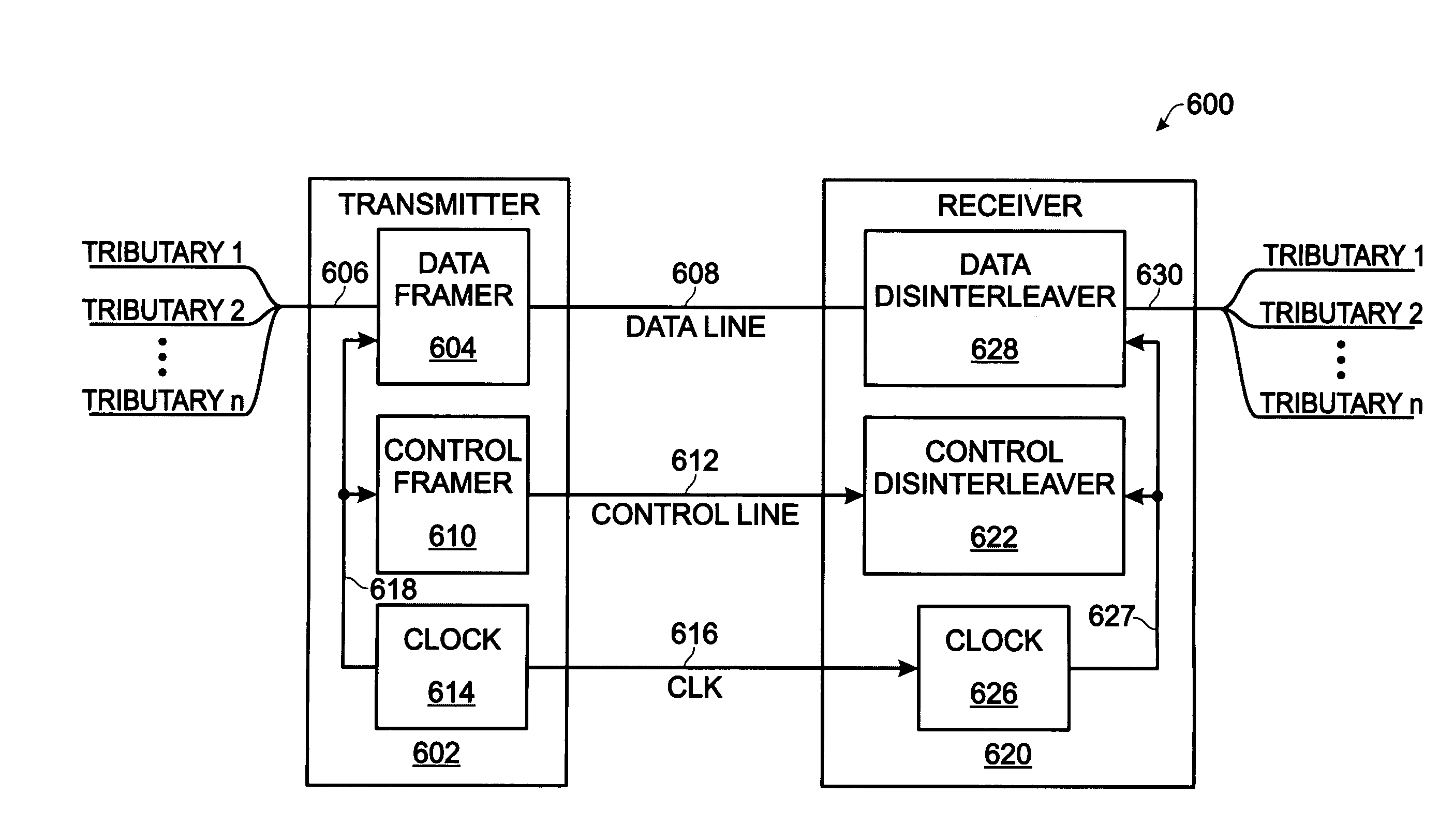Flexible tributary interface with serial control line
a serial control line and flexible technology, applied in the field of digital communication, can solve problems such as phase chang
- Summary
- Abstract
- Description
- Claims
- Application Information
AI Technical Summary
Benefits of technology
Problems solved by technology
Method used
Image
Examples
Embodiment Construction
[0039]FIG. 6 is a schematic block diagram depicting a system for transporting Plesiochronous Digital Hierarchy (PDH) tributaries. The system 600 comprises a transmitter 602. The transmitter 602 includes a data framer 604 having an input on line 606 to accept a plurality of PDH tributaries and an output on line 608 to supply a serial data stream of interleaved PDH tributaries. Here, n tributaries are shown, where n is not limited to any particular number. In one aspect, the n tributaries are multiplexed into a single input (pin). Alternately, the n tributaries are multiplexed into m inputs (pins), where m is a value greater than 1 and less than n. In another aspect, the transmitter 602 has an input for every tributary.
[0040]A control framer 610 has an output on line 612 to supply an internally generated serial control stream of signals for recovering the PDH tributaries. A clock 614 has an output on line 616 to supply a clock signal for timing the data stream and the control stream. ...
PUM
 Login to View More
Login to View More Abstract
Description
Claims
Application Information
 Login to View More
Login to View More - R&D
- Intellectual Property
- Life Sciences
- Materials
- Tech Scout
- Unparalleled Data Quality
- Higher Quality Content
- 60% Fewer Hallucinations
Browse by: Latest US Patents, China's latest patents, Technical Efficacy Thesaurus, Application Domain, Technology Topic, Popular Technical Reports.
© 2025 PatSnap. All rights reserved.Legal|Privacy policy|Modern Slavery Act Transparency Statement|Sitemap|About US| Contact US: help@patsnap.com



